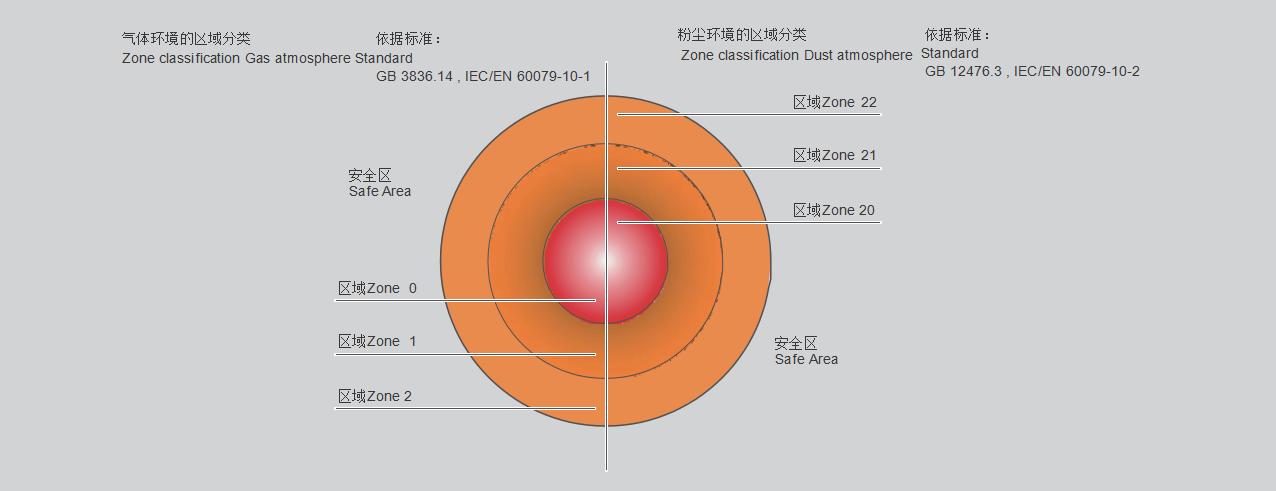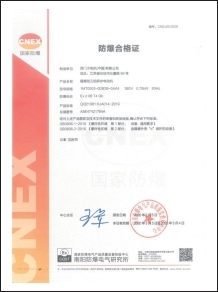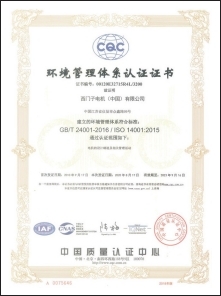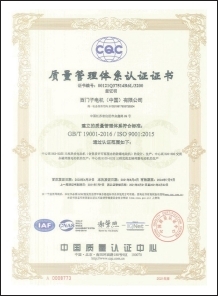
Privacy statement: Your privacy is very important to Us. Our company promises not to disclose your personal information to any external company with out your explicit permission.
Select Language
Brand:Beide
Transportation:Ocean
Place of Origin:China
BEIDE 3KW ExplosionThree-phase Asynchronous Motor 1MT0003 series flameproof motors is newly designed totally enclosed fan cooling (TEFC) high efficiency motor. This series flameproof motor completely meet the standard of IEC 60079- 0:2017/IEC...
Brand:Beide
Transportation:Ocean
Place of Origin:China
BEIDE 18.5KW ExplosionThree-phase Asynchronous Motor 1MT0003 series flameproof motors is newly designed totally enclosed fan cooling (TEFC) high efficiency motor. This series flameproof motor completely meet the standard of IEC 60079- 0:2017/IEC...
Brand:Beide
Transportation:Ocean
Place of Origin:China
BEIDE 1.1KW ExplosionThree-phase Asynchronous Motor,Rated output:0.55 ~ 315 kW,Frame size:80 ~ 355,380/660V 50Hz, Other common voltage can be,provide as option design,Standard color:RAL7011,Cooling method:IC411,Frame-proof marking:Ex d,IIB T4...
Brand:Beide
Transportation:Ocean
Place of Origin:China
1MT0003 series flameproof motors is newly designed totally enclosed fan cooling (TEFC) high efficiency motor. This series flameproof motor completely meet the standard of IEC 60079- 0:2017/IEC 60079-1:2017 and GB 3836.1-2010/GB 3836.2-2010. The type of...
Brand:Beide
Transportation:Ocean
Place of Origin:China
BEIDE 1.5KW ExplosionThree-phase Asynchronous Motor 1MT0003 series flameproof motors is newly designed totally enclosed fan cooling (TEFC) high efficiency motor. This series flameproof motor completely meet the standard of IEC 60079- 0:2017/IEC...
Brand:Beide
Transportation:Ocean
Place of Origin:China
A gas explosion-proof motor is a type of motor designed to operate safely in hazardous environments where there is a risk of explosion due to the presence of flammable gases or vapors. These motors are typically used in industries such as oil and...
Brand:Beide
Transportation:Ocean
Place of Origin:China
BEIDE 5.5KW ExplosionThree-phase Asynchronous Motor 1MT0003 series flameproof motors is newly designed totally enclosed fan cooling (TEFC) high efficiency motor. This series flameproof motor completely meet the standard of IEC 60079- 0:2017/IEC...
Brand:Beide
Transportation:Ocean
Place of Origin:China
BEIDE 1.5KW ExplosionThree-phase Asynchronous Motor 1MT0003 series flameproof motors is newly designed totally enclosed fan cooling (TEFC) high efficiency motor. This series flameproof motor completely meet the standard of IEC 60079- 0:2017/IEC...
Brand:Beide
Transportation:Ocean
Place of Origin:China
BEIDE 11KW ExplosionThree-phase Asynchronous Motor 1MT0003 series flameproof motors is newly designed totally enclosed fan cooling (TEFC) high efficiency motor. This series flameproof motor completely meet the standard of IEC 60079- 0:2017/IEC...
Brand:Beide
Transportation:Ocean
Place of Origin:China
BEIDE 7.5KW ExplosionThree-phase Asynchronous Motor 1MT0003 series flameproof motors is newly designed totally enclosed fan cooling (TEFC) high efficiency motor. This series flameproof motor completely meet the standard of IEC 60079- 0:2017/IEC...
Brand:Beide
Transportation:Ocean
Place of Origin:China
BEIDE 22KW ExplosionThree-phase Asynchronous Motor 1MT0003 series flameproof motors is newly designed totally enclosed fan cooling (TEFC) high efficiency motor. This series flameproof motor completely meet the standard of IEC 60079- 0:2017/IEC...
Brand:Beide
Transportation:Ocean
Place of Origin:China
BEIDE 15KW ExplosionThree-phase Asynchronous Motor 1MT0003 series flameproof motors is newly designed totally enclosed fan cooling (TEFC) high efficiency motor. This series flameproof motor completely meet the standard of IEC 60079- 0:2017/IEC...
Brand:Beide
Transportation:Ocean
Place of Origin:China
37KW 1MT0003 Gas Explosion-Proof Motor Noise levels for mains-fed operation The noise levels are measured in accordance with DIN EN ISO 1680 in a anechoic room. It is specified as the A-valued measuring-surface sound pressure level Lpfa in dB (A)....
Brand:Beide
Transportation:Ocean
Place of Origin:China
30KW 1MT0003 Gas Explosion-Proof Motor Noise levels for mains-fed operation The noise levels are measured in accordance with DIN EN ISO 1680 in a anechoic room. It is specified as the A-valued measuring-surface sound pressure level Lpfa in dB (A)....
Brand:Beide
Transportation:Ocean
Place of Origin:China
BEIDE 4KW ExplosionThree-phase Asynchronous Motor 1MT0003 series flameproof motors is newly designed totally enclosed fan cooling (TEFC) high efficiency motor. This series flameproof motor completely meet the standard of IEC 60079- 0:2017/IEC...

Siemens Standard Motors Ltd. (SSML)
Siemens Standard Motors Ltd. (SSML) is a Siemens-owned company in China. SSML is located in Yizheng City, Jiangsu Province. The company focuses on developing and producing small and medium low-voltage motors. Currently, SSML mainly produce Siemens brand low voltage AC motors according to IEC standards, and Beide brand low voltage motors designed according to China local standards.
As one of Siemens main low-voltage motor production facilities worldwide, SSML uses the knowledge and experience of more than 100 years in motor design and manufacturing, owns the advanced manufacture equipment and process, adopts the SIEMENS modern management model , and implements comprehensive quality control according to ISO9001 2015. SSML will continuously serve customers with high quality products and good service.

In many industrial and public industries, explosion hazards are ever- present, e.g. the chemicals industry, refineries, on drilling platforms, gas stations, feed manufacturing and sewage treatment plants. The risk of explosion is always present when gases, fumes, mist or
dust are mixed with oxygen in the air in an explosive ratio close to sources of ignition that are able to release the so-called minimum ignition energy.
To ensure safety in these areas, legislators in most countries have implemented appropriate stipulations in the form of laws and regulations based on national and international standards. Explosion- protected equipment is designed such that an explosion can be prevented when it is used properly.
Classification of zones
Areas subject to explosion hazard are divided into zones. Zoning is based on the presence time of explosive substances and probability of explosion. Information and specifications for classification of the zones are laid down in the following standards:
•GB 3836.14, IEC/EN 60079-10-1 for gas atmospheres
•GB 12476.3, IEC/EN 60079-10-2 for dust atmospheres
Furthermore, a distinction is made between various explosion groups as well as temperature classes and these are included in the hazard assessment.

Depending on the particular zone and therefore the associated hazard, operating equipment must comply with defined minimum requirements regarding the type of protection. The different types of protection require corresponding measures to prevent ignition that should be implemented at the motor in order to prevent a surrounding explosive atmosphere from being ignited.
|
Zone |
|
Assigned types of protection |
Category according to 2014/34/EU |
Equipment protection level acc. to GB3836.1 & IEC/EN 60079-0 |
|
|
|
|
||||
|
Gas 1) 2) |
Dust 1) 2) |
Zone definition acc. to GB3836.14 & IEC/EN 60079-10-1 for gas atmospheres GB 12476.3 & IEC/EN 60079-10-2 for dust atmospheres |
|||
|
0 |
– |
An area in which there is an explosive gas atmosphere constantly, over a long period or frequently. |
Low-voltage motors not permitted |
1 |
Ga |
|
1 |
– |
An area in which it is expected that an explosive gas atmosphere will occur occasionally during normal operation. |
Ex e(GB) or Ex eb(IEC), Ex de, Ex d(GB) or Ex db(IEC)
|
2 |
Gb |
|
2 |
– |
An area in which it is expected that an explosive gas atmosphere will occur only rarely and then only briefly during normal operation. |
Ex nA(GB) or Ex ec(IEC) |
3 |
Gc |
|
– |
20 |
An area in which there is an explosive gas atmosphere comprising a dust-air mixture constantly, over a long period or frequently. |
Low-voltage motors not permitted |
1 |
Da |
|
– |
21 |
An area in which it is expected that an explosive gas atmosphere comprising a dust-air mixture will occur occasionally during normal operation. |
Ex tb |
2 |
Db |
|
– |
22 |
An area in which it is expected that an explosive gas atmosphere in the form of a cloud of flammable dust in air will occur only rarely and then only briefly during normal operation. |
Ex tc 3) |
3 |
Dc |
1) Motors of
-Zone 1 can also be used in Zone 2.
-Zone 21 can also be used in Zone 22.
2) Motors which are certified for gas or dust protection must not be used in hybrid mixtures! Hybrid mixtures: when explosive gas and dust atmospheres occur simultaneously.
3) Ex tc motors are not approved for operation in environments containing conductive du
Application
The explosion-proof motors are often used in the following industries to prevent explosion hazards that result in serious injury to persons and severe damage to property.
•Chemical and petrochemical industry
•Production of mineral oil and gas
•Gas works
•Gas supply companies
•Petrol stations
•Coking plants
•Mills (e.g. corn, solids)
•Sewage treatment plants
•Wood processing (e.g. sawdust, tree resin)
•Other industries subject to explosion hazardsst.
Flameproof class of gases and vapors
|
Location |
Code of standard GB3836.1 / GB3836.2 / IEC60079-0 / IEC60079-1 Flameproof class |
|
For Mines |
d Ⅰ |
|
Explosive gas environment except mines |
d Ⅱ A |
|
d Ⅱ B |
|
|
d Ⅱ C |
Temperature classes
|
Temperature class of electrical equipment |
lMaximum surface temperature of electrical equipment |
Ignition temperature of gases or vapors |
|
T1 |
450ºC |
> 450ºC |
|
T2 |
300ºC |
> 300ºC |
|
T3 |
200ºC |
> 200ºC |
|
T4 |
135ºC |
> 135ºC |
|
T5 |
100ºC |
> 100ºC |
|
T6 |
85ºC |
> 85ºC |
Classification of gases and vapors into explosion groups and temperature classes
|
explosion group |
Temperature classes |
|||||
|
T1(450) |
T2(300) |
T3(200) |
T4(135) |
T5(100) |
T6(85) |
|
|
Material designation |
Material designation |
Material designation |
Material designation |
Material designation |
Material designation |
|
|
IIA (MESG≥0.9mm) |
Acetone |
i-amyl acetate |
Benzine |
Acetaldehyde |
|
|
|
Ethane |
n-butane |
Gasoline |
||||
|
Ethyl acetate |
n-butyl alcohol |
Special benzine |
||||
|
Ethyl chloride |
Cyclohexanone |
Diesel fuel |
||||
|
Ammonia |
1.2- dichloroethane |
Heating oils |
||||
|
Benzene |
Acetic acid anhydride |
n-hexane |
||||
|
Acetic acid |
||||||
|
Carbon monoxide |
||||||
|
Methane |
||||||
|
Methanol |
||||||
|
Methyl chloride |
||||||
|
Naphthalene |
||||||
|
Phenol |
||||||
|
Propane |
||||||
|
Toluene |
||||||
|
IIB (0.5mm<MESG <0.9mm) |
Town gas (illuminating gas) |
Ethyl alcohol |
Hydrogen sulfide |
Ethyl ether |
|
|
|
Ethylene |
||||||
|
Ethylene oxide |
||||||
|
IIC (MESG≤0.5mm) |
Hydrogen |
Acetylene |
|
|
|
Carbon disulfide |
MESG, maximum experimental safe gap (for an explosive mixture). It's maximum gap of a joint of 25 mm in width which prevents any transmission of an explosion during 10 tests made under the conditions specified in GB 3836.11 and IEC 60079-20-1.
The smaller the MESG value, the higher the explosion-proof level of the equipment, and the more stringent requirements for the equipment. If the equipment can run under the IIC gas group, it also meets the requirements of IIA and IIB.
|
Vibration Grade |
Frame size (mm)
|
56 ≤ FS ≤ 132 |
H>132 |
||
|
Mounting |
Vibration displacement/um |
Vibration velocity/(mm/s) |
Vibration displacement/um |
Vibration velocity/(mm/s) |
|
|
A |
Free suspension |
45 |
2.8 |
45 |
2.8 |
|
Rigid mounting |
- |
- |
37 |
2.3 |
|
|
2.81) |
|||||
|
B |
Free suspension |
18 |
1.1 |
29 |
1.8 |
|
Rigid mounting |
- |
- |
24 |
1.5 |
|
|
1.81) |
|||||
Bearing Assignment
1MT0003 series motor are supplied with ball bearing as standard, these bearings are either sealed or regreasable type. Bearing design meets
the requirements of explosion protection. Fixed bearing at NDE is as standard configuration for FS160 ~3 55 motors;For FS80 ~ 132 motors the bearings are floating, fixed bearing at DE can be ordered with option code L20.
If higher cantilever force on the shaft required, the increased cantilever bearing design (Option code: L22) should be considered.
As standard, FS80 ~ 250 motors are not with regreasing device, but re-greasing device (Option code: L23) can be configured in FS160~250. FS280 ~ 355 motors with regreasable bearing and regreasing device is configured as standard.
The following table lists the standard bearing configuration.
Bearing Assignment
|
Frame size |
Number of poles |
Standard design |
Optional design |
||
|
Horizontal / Vertical mounting |
Increased cantilever force (option code L22) |
||||
|
DE bearing |
NDE bearing |
DE bearing |
NDE bearing |
||
|
80 |
2 ~ 6 |
6204-2RZ C3 |
6204-2RZ C3 |
- |
- |
|
90 |
2 ~ 6 |
6205-2RZ C3 |
6205-2RZ C3 |
- |
- |
|
100 |
2 ~ 6 |
6306-2RZ C3 |
6306-2RZ C3 |
- |
- |
|
112 |
2 ~ 6 |
6306-2RZ C3 |
6306-2RZ C3 |
- |
- |
|
132 |
2 ~ 8 |
6308-2RZ C3 |
6308-2RZ C3 |
- |
- |
|
160 |
2 ~ 8 |
6309-2RZ C3 |
6309-2RZ C3 |
NU309 |
6309 C3 |
|
180 |
2 ~ 8 |
6310-2RZ C3 |
6310-2RZ C3 |
NU310 |
6310 C3 |
|
200 |
2 ~ 8 |
6312 C3 |
6312 C3 |
NU312 |
6312 C3 |
|
225 |
2 ~ 8 |
6313 C3 |
6313 C3 |
NU313 |
6313 C3 |
|
250 |
2 ~ 8 |
6315 C3 |
6315 C3 |
NU315 |
6315 C3 |
|
280 |
2 |
6315 C3 |
6315 C3 |
NU315 |
6315 C3 |
|
4 ~ 8 |
6317 C3 |
6317 C3 |
NU317 |
6317 C3 |
|
|
315 |
2 |
6316 C3 |
6316 C3 |
NU316 |
6316 C3 |
|
4 ~ 8 |
6319 C3 |
6319 C3 |
NU319 |
6319 C3 |
|
|
355 |
2 |
6317 C3 |
6317 C3 |
NU317 |
6317 C3 |
|
4~ 8 |
6320 C3 |
6320 C3 |
NU320 |
6320 C3 |
|
Grease life and re-greasing interval
For permanent lubrication, the bearing grease lifetime is matched to the bearing lifetime.
Grease lifetime and re-grease interval (Horizontal installation)
|
Using permanent lubrication bearing |
||
|
Frame size |
Poles |
Grease lifetime up to CT 40oC 1) |
|
80 ~ 250 |
2-8 |
20000 (or)40000 2) |
1) Maximum ambient temperature is 40oC under standard conditions. For permanent lubrication bearings, grease lifetime will be halved for each 10K ambient temperature rising.
2) The 40000h grease lifetime is suited for horizontal mounting motors without additional axial force.
|
Using re-greasable bearing |
|||
|
Frame size |
Poles |
Bearing |
Interval under standard ambient temperature(h) |
|
160 |
2P |
6309 C3 NU309 |
4000 |
|
4~8P |
8000 |
||
|
180 |
2P |
6310 C3 NU310 |
4000 |
|
4~8P |
8000 |
||
|
200 |
2P |
6312 C3 NU312 |
4000 |
|
4~8P |
8000 |
||
|
225 |
2P |
6313 C3 NU313 |
4000 |
|
4~8P |
8000 |
||
|
250 |
2P |
6315 C3 NU315 |
4000 |
|
4~8P |
8000 |
||
|
280 |
2P |
6315 C3 NU315 |
4000 |
|
4P |
6317 C3 NU317 |
6000 |
|
|
6~8P |
8000 |
||
|
315 |
2P |
6316 C3 NU316 |
3000 |
|
4P |
6319 C3 NU319 |
4000 |
|
|
6~8P |
6000 |
||
|
355 |
2P |
6317 C3 NU317 |
3000 |
|
4P |
6320 C4 NU320 |
4000 |
|
|
6~8P |
6000 |
||
When the motor runs outside of normal conditions, the bearing life will be reduced, such as the following conditions.
■When motor runs beyond the rated speed, the increase of motor vibration will result in the extra radial and axial force on bearing. This will reduce the life of bearing;
■When the motor vibration increase due to the environment or other equipment, the bearing also will endure more radial and axial force. This also will reduce the life of bearing;
Connection box
The connection box is located on the top of motor housing as standard, and can be rotated by 4×90º to allow for cable entry from each direction. When selecting the entrance to the motor drive end, please notice whether there is enough space in front of the installation for the cable line. For the standard connection box with hoop gland, the motor of FS 80~225 has one hoop gland, and the motor of FS250~355 has two.
Motor protection
Anti-condensation heater
Motors whose windings are at risk of condensation due to the climatic conditions, e.g. inactive motors in humid atmospheres or motors that are subjected to widely fluctuating temperatures can be equipped with anti-condensation heaters (Option code: Q04).
Anti-condensation heaters must be switched off during operation. When motor shut down, the heaters must be switched on.
The electrical parameters of anti-condensation heaters are shown in the following table.
Electrical data of Anti-condensation heater
|
Frame size |
Power (W) & voltage (V) |
|
Q04 |
|
|
80 ~ 90 |
20 W / 220 V |
|
100 ~ 112 |
30 W / 220 V |
|
132 ~ 160 |
40 W / 220 V |
|
180 ~ 200 |
50 W / 220 V |
|
225 ~ 280 |
60 W / 220 V |
|
315 |
80 W / 220 V |
|
355 |
100 W / 220 V |
Motor thermal overload protection
Motor thermal protection means to use of thermal protectors and thermal detectors incorporated into the stator windings or placed in other suitable positions in motor in order to protect them against serious damage due to thermal overloads.
The order variants for motor protection are coded with letters in the 15th position of the Motor Order No., or ordered with Option code.
Rated Output
1MT0003 motors rated output powers means that the motor runs under continuous duty S1 (IEC 60034 - 1) operation when operated at ambient temperature from -20 ºC to 40 ºC and at altitudes of up to 1000 m over sea.
Voltage and Frequency
IEC 60034-1 differentiates between Category A (combination of voltage deviation ±5 % and frequency deviation ±2 %) and
Category B (combination of voltage deviation ±10 % and frequency
deviation +3 % / -5 %) for voltage and frequency fluctuations. The motors can supply their rated torque in both Category A and B. In Category A, the temperature rise is approximately 10 K higher than during normal operation.
|
Standard 60034 - 1 |
Category A |
Category B |
|
Voltage deviation |
±5 % |
±10 % |
|
Frequency deviation |
±2 % |
+3 % / -5 % |
|
According to the standard, longer operation is not recommended for Category B. |
||
Tolerance for electrical data
■Efficiencyηat
Prated Prated
≤ 150 kW: - 0.15 x (1 – η)
> 150 kW: - 0.10 x (1 – η)
Prated ≤ 150 kW: - 0.15 x (1 – η)
Prated > 150 kW: - 0.10 x (1 – η) With η being a decimal number
■Power factor - (1 – cosφ) / 6 Minimum absolute value: 0.02 Maximum absolute value: 0.07
■Slip ±20 % (for motors < 1 kW ±30 % is admissible)
■Locked-rotor current +20 %
■Locked-rotor torque -15 % to +25 %
■Breakdown torque -10 %
■Moment of inertia ±10 %
Overload times
According to IEC60034, 1MT0003 series motors are designed to withstand overload capacity of 1.5 times rated current for 2 minutes at rated voltage and frequency.
Certificates





Privacy statement: Your privacy is very important to Us. Our company promises not to disclose your personal information to any external company with out your explicit permission.

Fill in more information so that we can get in touch with you faster
Privacy statement: Your privacy is very important to Us. Our company promises not to disclose your personal information to any external company with out your explicit permission.